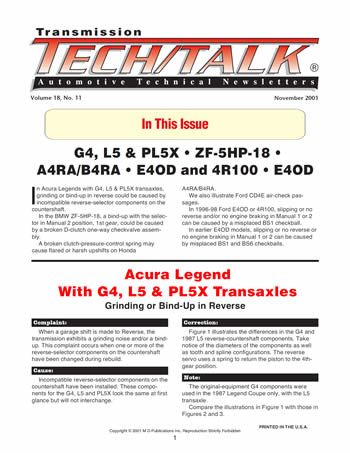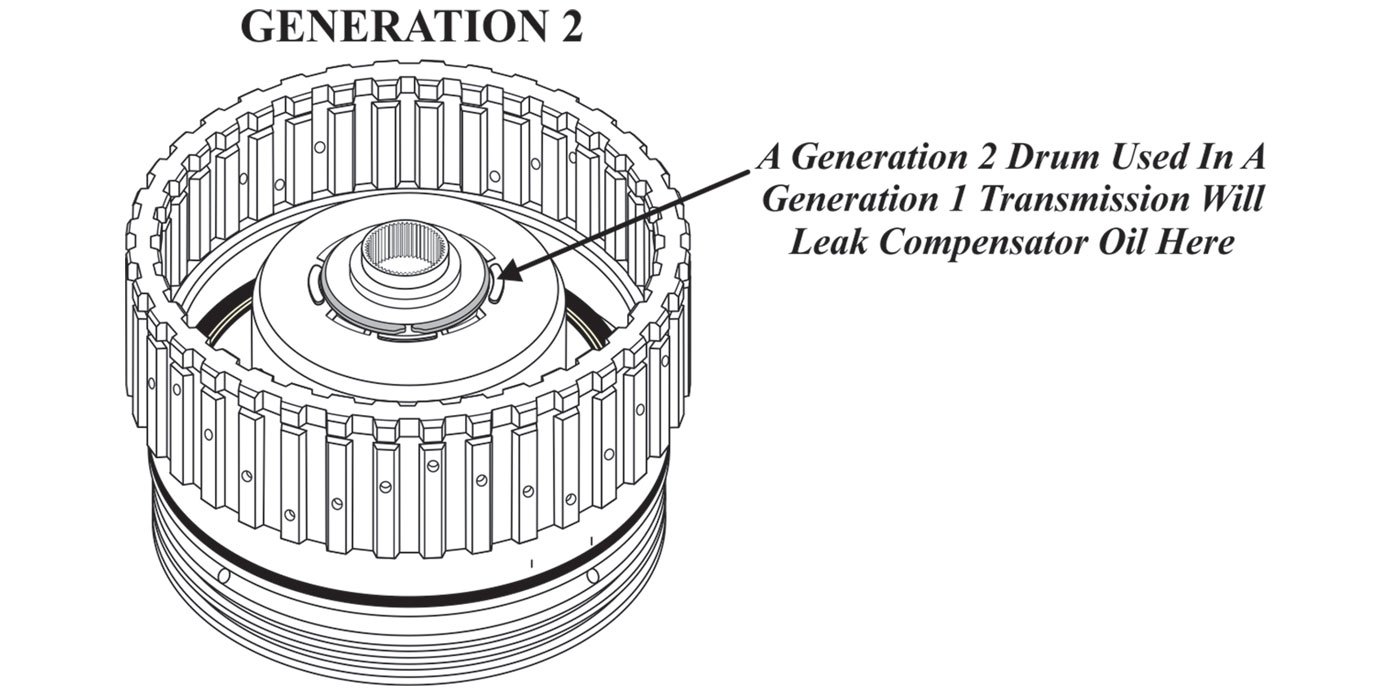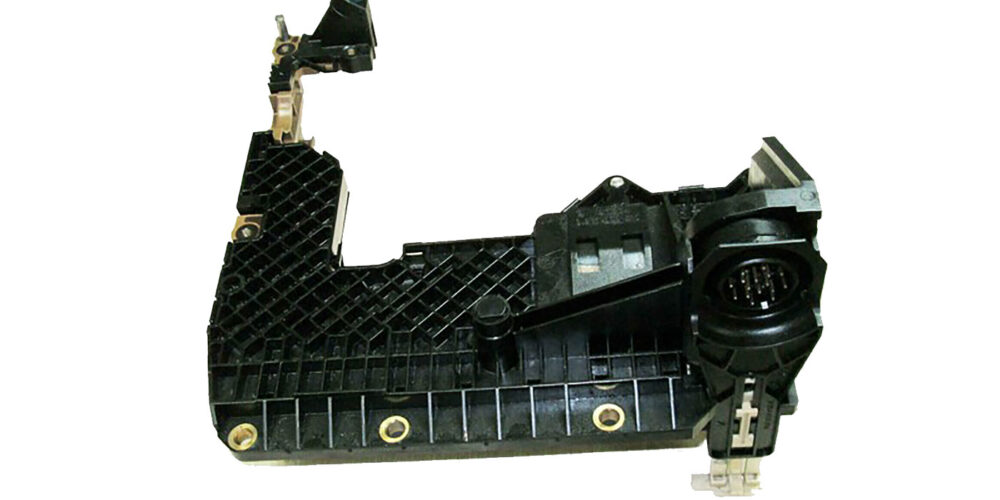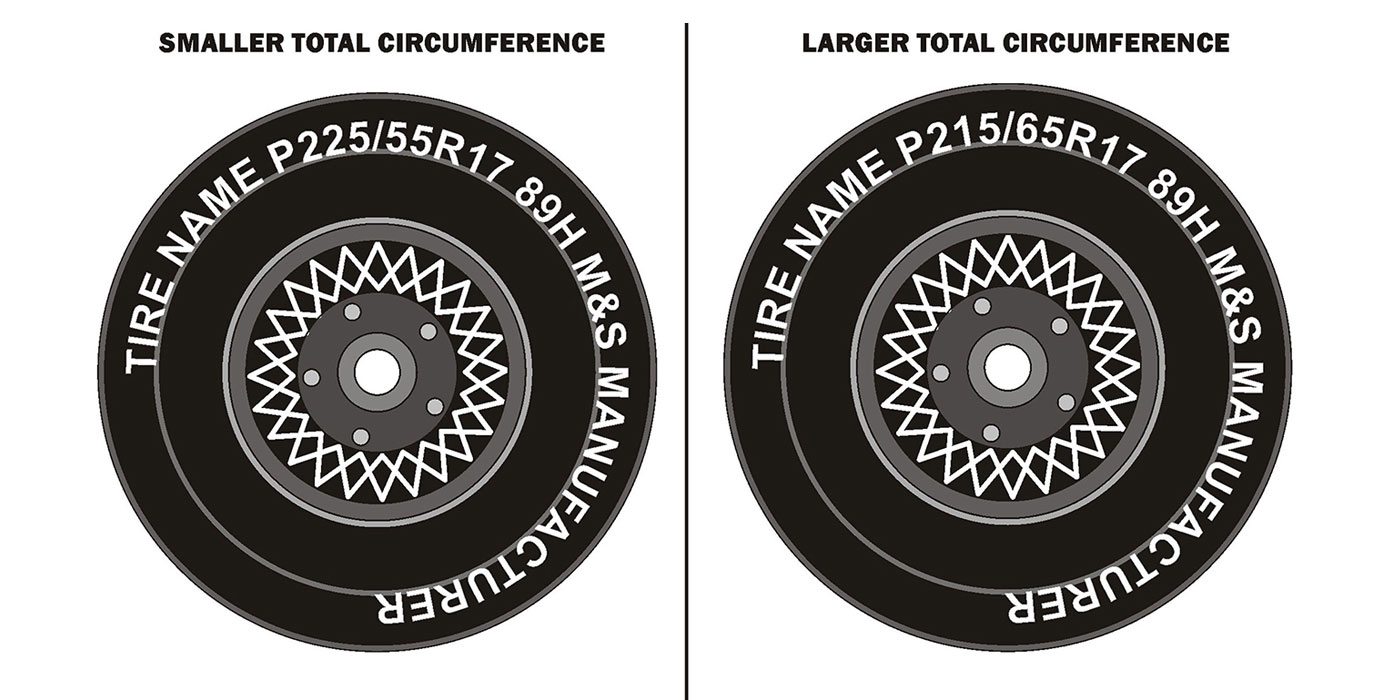



When a garage shift is made to Reverse, the transmission exhibits a grinding noise and/or a bind-up. This complaint occurs when one or more of the reverse-selector components on the countershaft have been changed during rebuild.

Incompatible reverse-selector components on the countershaft have been installed. These components for the G4, L5 and PL5X look the same at first glance but will not interchange.

Figure 1 illustrates the differences in the G4 and 1987 L5 reverse-countershaft components. Take notice of the diameters of the components as well as tooth and spline configurations. The reverse servo uses a spring to return the piston to the 4th-gear position.
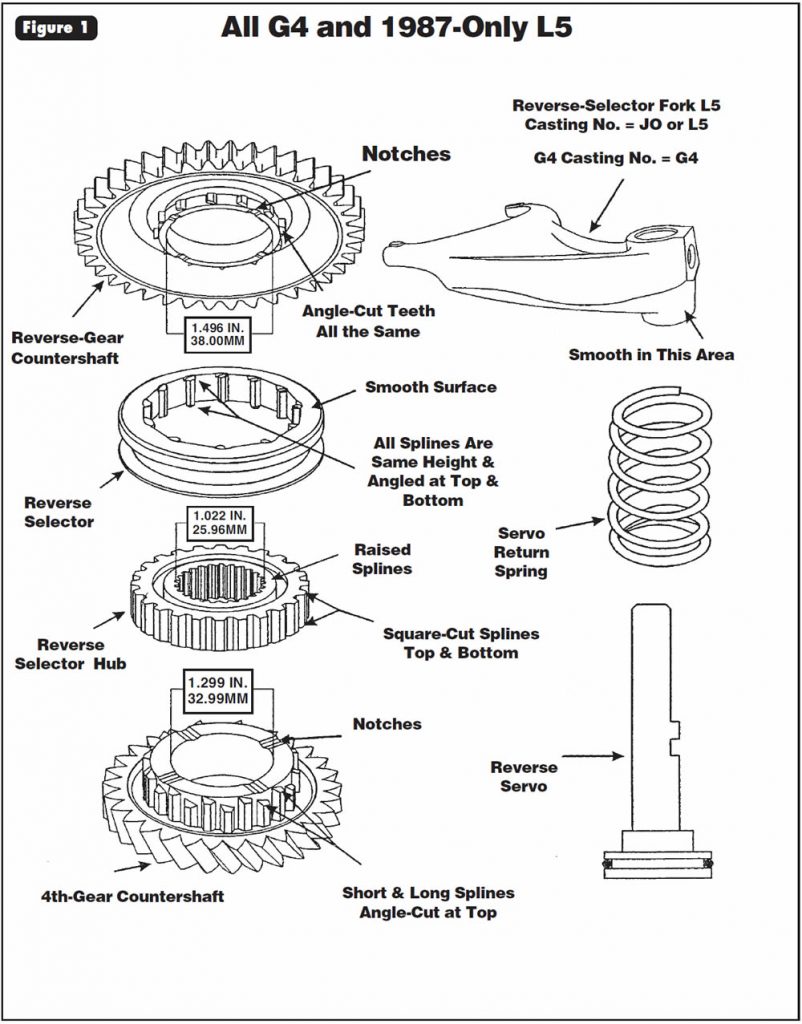
Note:
The original-equipment G4 components were used in the 1987 Legend Coupe only, with the L5 transaxle.
Compare the illustrations in Figure 1 with those in Figures 2 and 3.
Figure 2 illustrates the differences in the 1988 L5 and some 1989 L5 reverse-countershaft components. Take notice of the diameters of the components as well as tooth and spline configurations. This reverse servo also uses a spring to return the piston to the 4th-gear position.
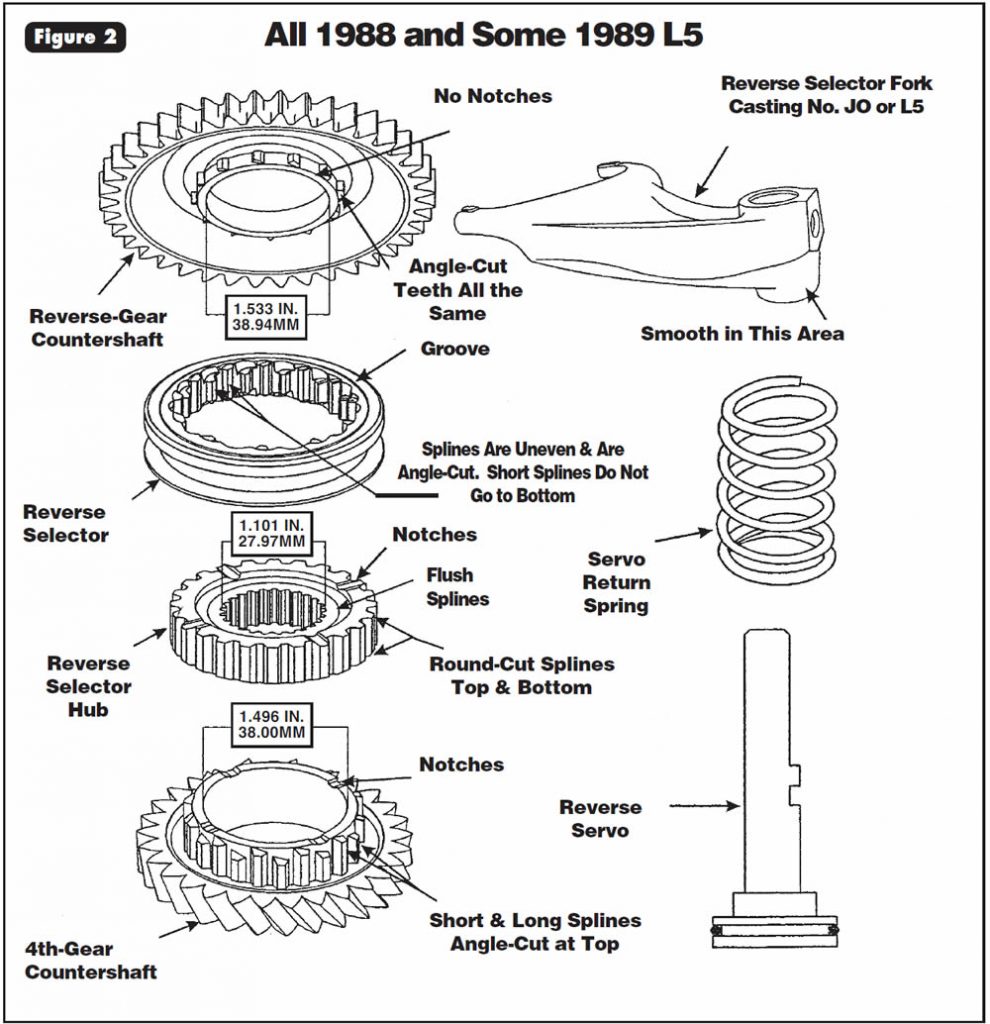
Compare the illustrations in Figure 2 with those in Figures 1 and 3.
Figure 3 illustrates the differences in some 1989 L5 and 1990 PL5X reverse-countershaft components. Take notice of the diameters of the components as well as tooth and spline configurations. The 1989 L5 and 1990 PL5X do not use a servo return spring, as they have a detent mechanism to keep the reverse servo in the reverse or 4th-gear position. The fork also is different from the previous design level in that it is ribbed to accommodate the detent mechanism.
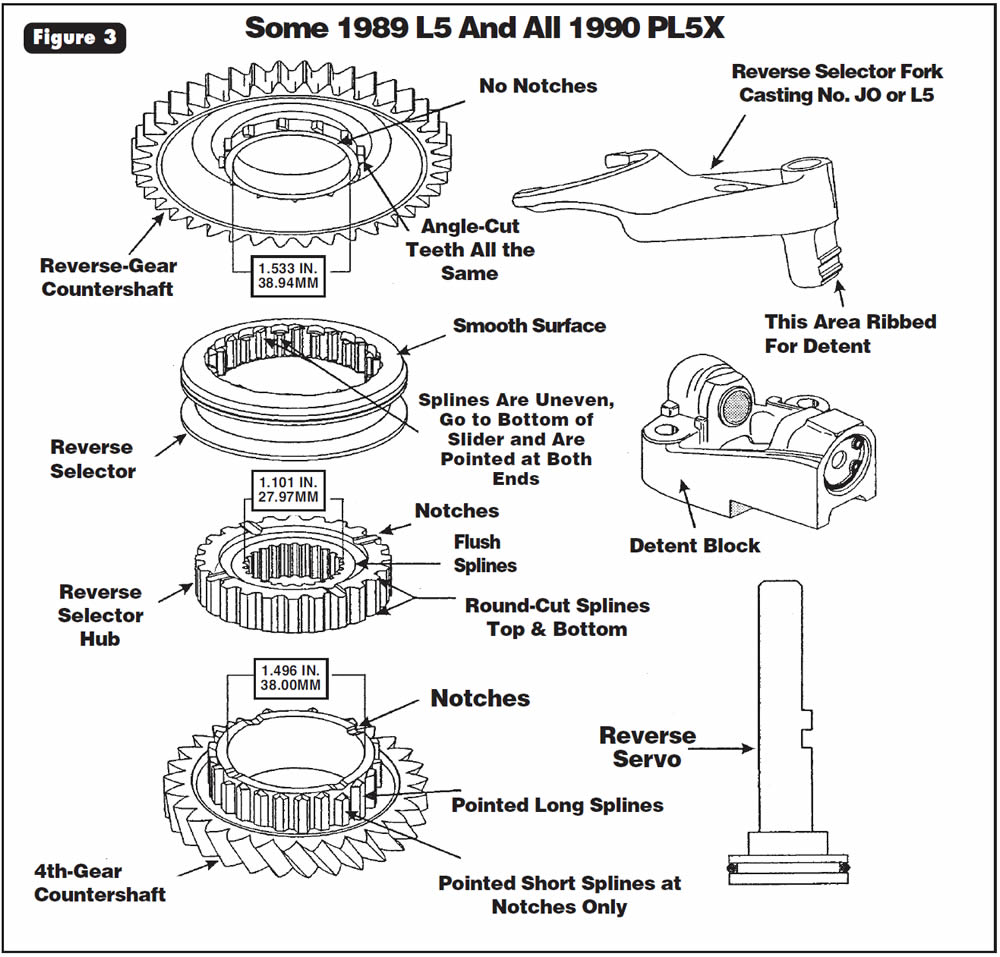
Compare the illustrations in Figure 3 with those in Figures 1 and 2.

Honda/Acura internal components look very similar. Always look closely to avoid this misassembly or any of the many other complaints that incompatible parts can create.
Even though parts look the same, there can be slight dimensional differences. Because clearances in most Honda/Acura units are 0.003-0.006 inch, there is little room for error. Always check endplay before final assembly of the transmission.
Special Note:
- These are correction pages for illustrations that mistakenly were published in the 2001 Seminar Blue Book and in the February 2001 issue of Transmission Digest.
- Many thanks to Brett Bogan of Hardparts for Transmissions for his assistance in compiling this information.




Before or after overhaul, vehicles equipped with ZF-5HP-18 may exhibit a bind-up condition in the Manual 2 position, 1st gear.

The cause may be that the plastic D-clutch one-way checkvalve assembly in the lower rear valve body (#15 in Figure 4) is broken, allowing the B clutch (reverse input clutch) to be on while the D clutch (low/reverse clutch) is on in 1st gear.
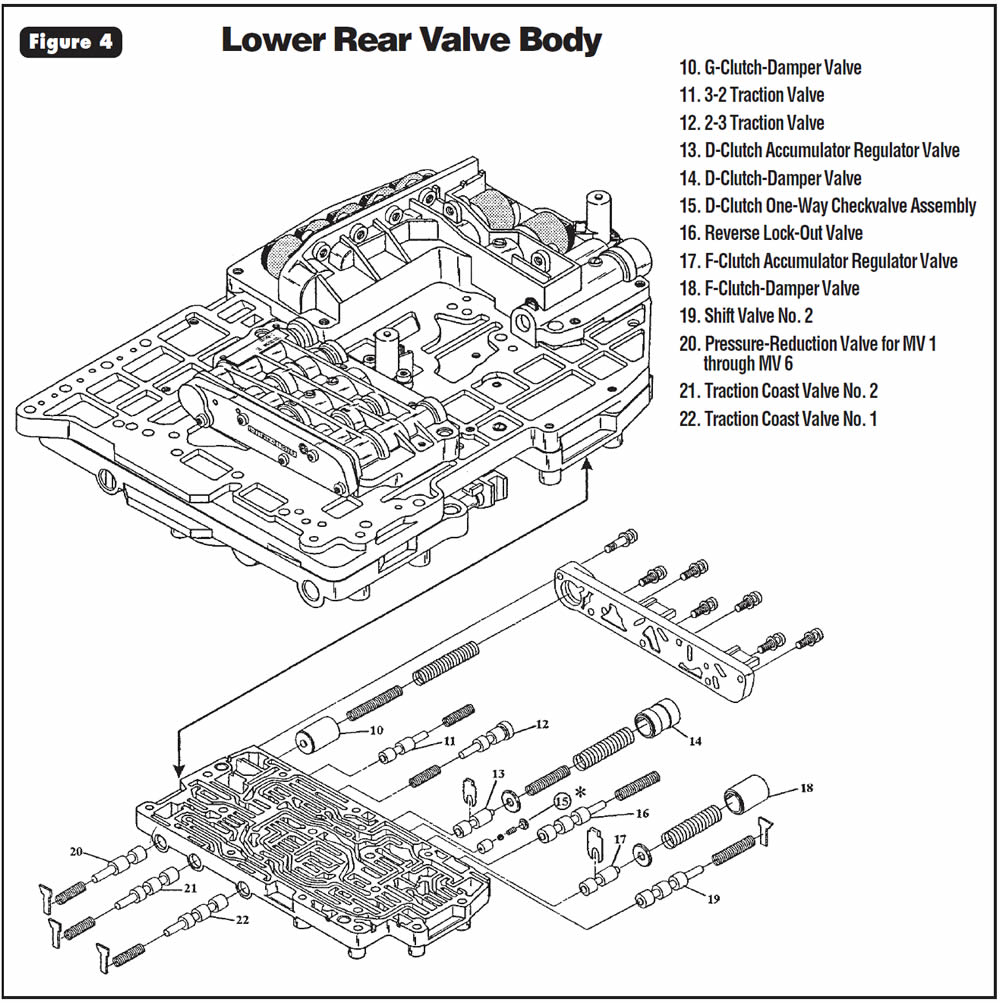

Replace the D-clutch one-way checkvalve assembly (See Figure 5) with a new assembly from ZF, or a new aluminum checkvalve assembly offered by Mario Aristides (phone 305-666-3544 or fax 305-666-8238).
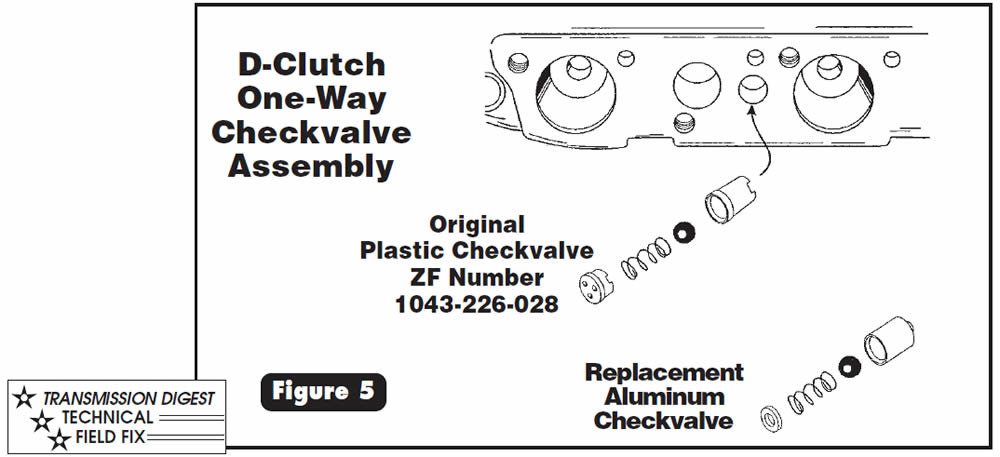




Before or after overhaul, vehicles equipped with A4RA or B4RA transaxles may exhibit flared or harsh upshifts.

The cause may be a broken clutch-pressure-control valve spring in the secondary valve body, allowing the valve to restrict clutch apply and causing the flared shifts, or the pieces of the broken spring stacking on top of each other and keeping the valve from stroking, creating the harsh shifts. See Figure 6 for the valve’s hydraulic function.
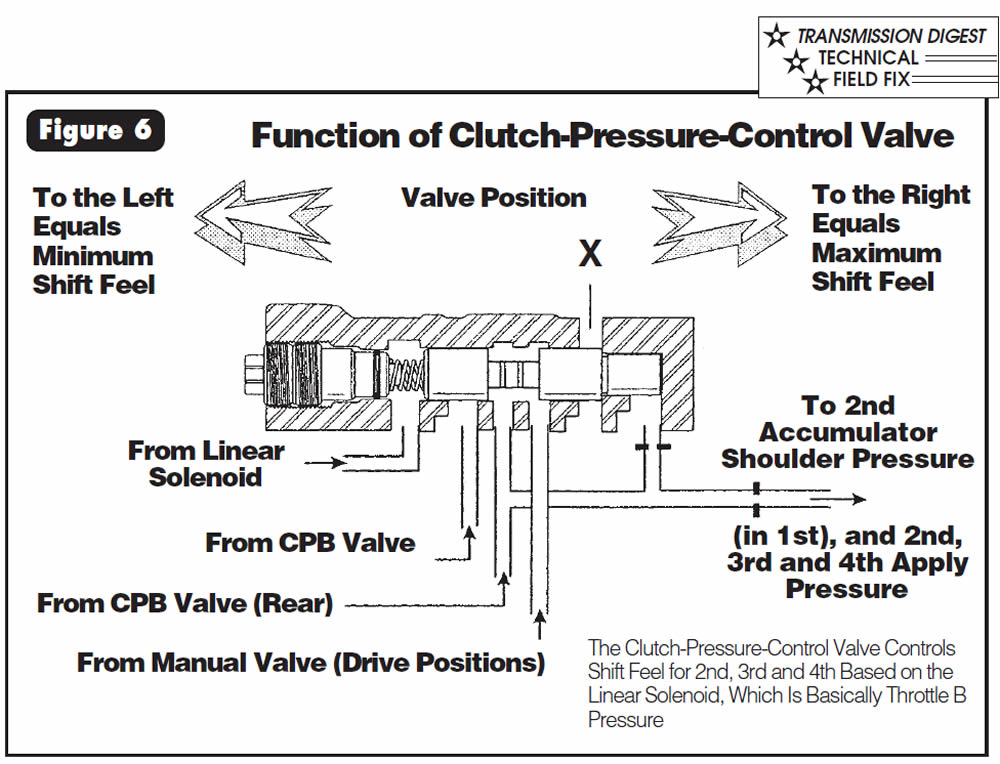

Locate the clutch-pressure-control valve (see Figure 7). Remove the lock nut.
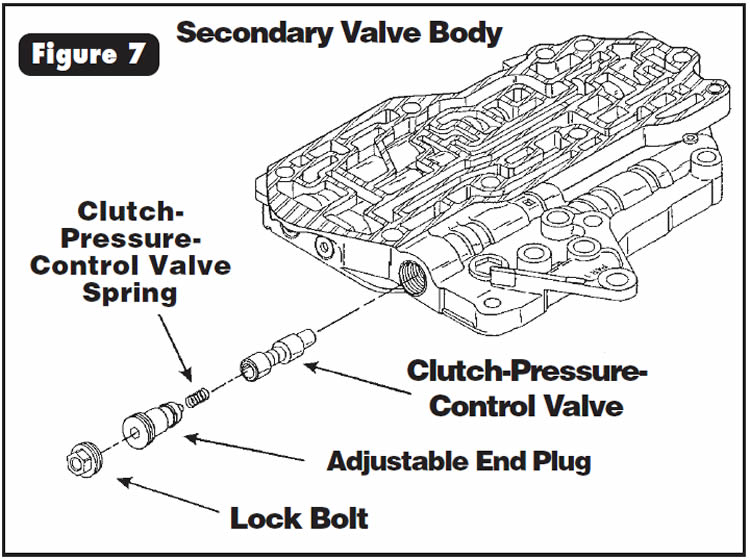
Refer to Figure 8 and measure the distance identified as Dimension A. Record this measurement. Remove the adjustable end plug and replace the broken spring, available from Sonnax. Install the adjustable end plug back to the original depth setting of Dimension A.
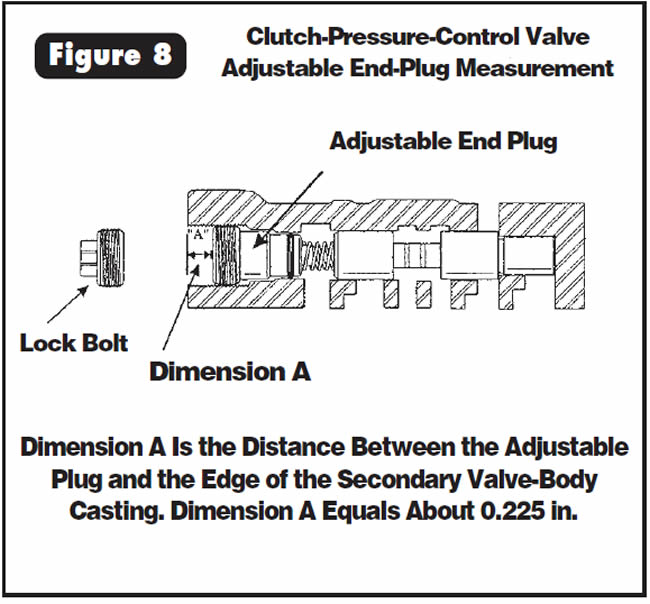

- Clutch-pressure-control valve spring, Sonnax Part Number . . . . . . . . . 88894
- Note: This spring is not currently available separately from Honda.



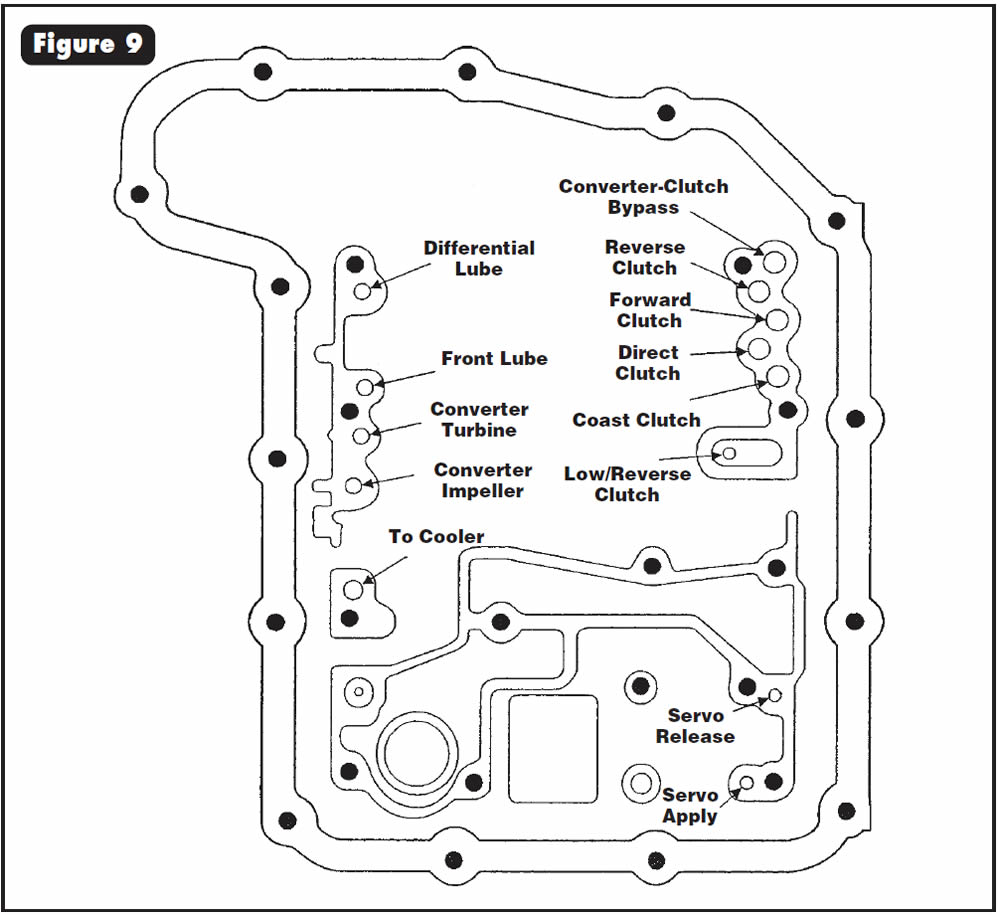




Before and/or after overhaul, 1996-98 Ford Motor Co. vehicles equipped with the E4OD transmission may exhibit slipping or no reverse and/or no engine braking with the selector in the Manual 2 or Manual 1 position.

The cause may be a missing or misplaced BS1 checkball. When this checkball is missing, oil pressure in the Reverse, Manual 2 or Manual 1 position will be exhausted at the manual valve.

To correct this condition, install the BS1 checkball at the location shown in Figure 10.
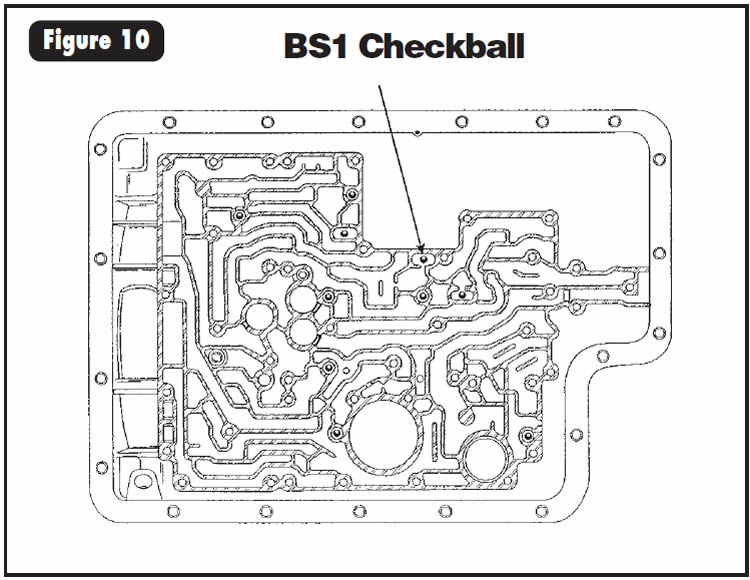




Before and/or after overhaul, 1990-95 Ford Motor Co. vehicles equipped with the E4OD transmission may exhibit slipping or no reverse and/or no engine braking with the selector in the Manual 2 or Manual 1 position.

The cause may be a missing or misplaced BS1 or BS6 checkball. When either of these checkballs is missing, oil pressure in Reverse, Manual 2 or Manual 1 will be exhausted at the manual valve.

To correct this condition, install the BS1 and BS6 checkballs in the locations shown in Figure 11.
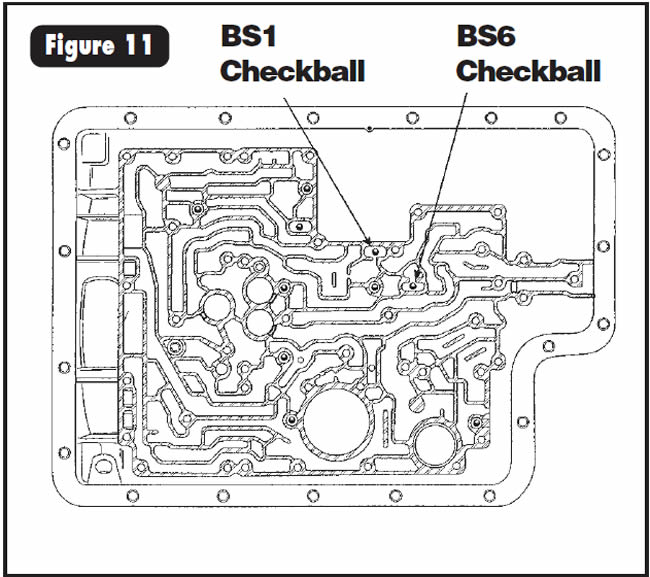


November 2001 Issue
Volume 18, No. 11
- Acura Legend With G4, L5 & PL5X Transaxles: Grinding or Bind-Up in Reverse
- BMW ZF-5HP-18: Bind-Up With Selector in Manual 2 Position, 1st Gear
- Honda A4RA/B4RA: Flared or Harsh Upshifts
- Ford CD4E: Air-Check Passages
- Ford E4OD and 4R100: Slipping or No Reverse and/or No Engine Braking in Manual 2 or 1, 1996-98
- Ford E4OD: Slipping or No Reverse and/or No Engine Braking in Manual 2 or 1, 1990-95

